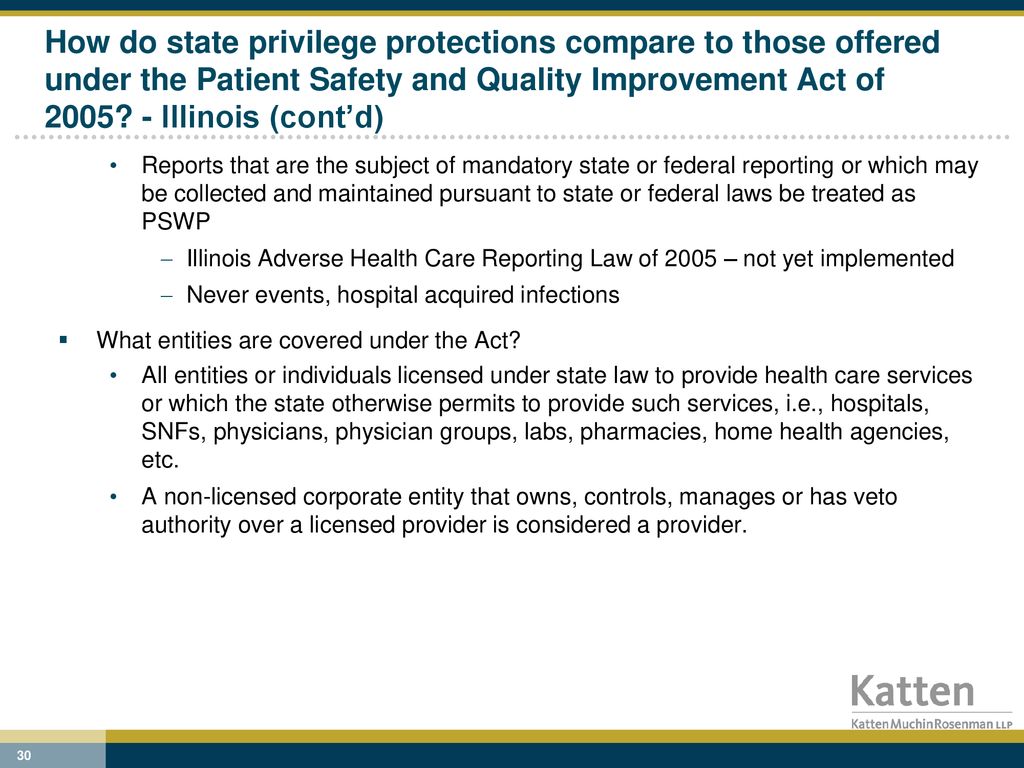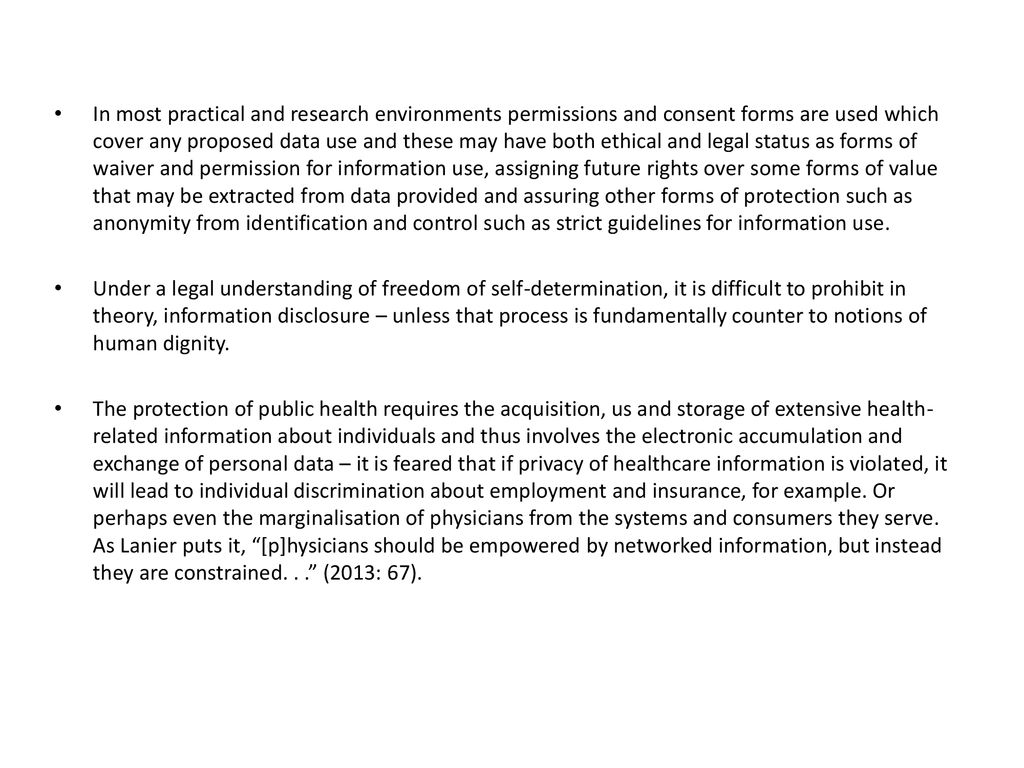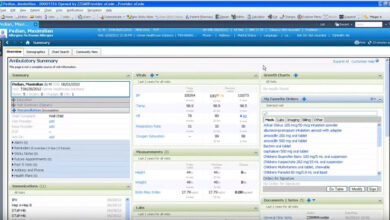
HHS Information Blocking Provider Disincentives Proposed Rule
The HHS Information Blocking Provider Disincentives Proposed Rule is shaking up the healthcare world! This new rule aims to crack down on providers who intentionally hinder the sharing of patient health information. It’s a complex issue with potentially huge financial and operational consequences for hospitals, clinics, and individual doctors. We’re diving deep into the details to understand what this means for healthcare providers and patients alike – from the potential costs and benefits of compliance to the ethical and technological hurdles involved.
The proposed rule Artikels specific disincentives for providers who engage in information blocking, ranging from financial penalties to potential legal action. It also tackles the thorny issue of interoperability, aiming to improve the seamless flow of patient data between different healthcare systems. We’ll explore how this impacts health information exchange, patient privacy, and the technological infrastructure needed to comply.
This is more than just a regulatory change; it’s a potential game-changer for how healthcare information is handled and shared.
Overview of the HHS Information Blocking Provider Disincentives Proposed Rule
The HHS Information Blocking Provider Disincentives Proposed Rule aims to improve healthcare data exchange and interoperability by addressing practices that hinder the access, exchange, and use of electronic health information (EHI). This rule, a significant step in implementing the 21st Century Cures Act, focuses on preventing providers from engaging in information blocking, thereby fostering a more seamless and patient-centric healthcare system.
It’s a complex piece of legislation with far-reaching implications for healthcare providers and technology developers alike.The proposed rule’s scope is broad, encompassing a wide range of healthcare providers, including hospitals, physicians, and health information exchanges. It specifically targets actions that unreasonably interfere with the access, exchange, or use of EHI. This isn’t simply about outright refusal to share data; it also includes practices that create unnecessary barriers or delays, such as imposing overly burdensome processes or using proprietary formats that limit interoperability.
The rule seeks to create a more transparent and accessible system for patient data, ultimately empowering individuals with better control over their own health information.
Key Provisions Related to Information Blocking
This section details the specific actions considered information blocking under the proposed rule. The rule Artikels eight exceptions where information blocking might be justified, such as protecting patient privacy or ensuring data security. However, the burden of proof rests on the provider to demonstrate that their actions fall under one of these exceptions. The rule also emphasizes the importance of using standardized formats and APIs to facilitate data exchange, encouraging the adoption of industry-standard technologies.
Failing to meet these standards, without a valid exception, would be considered information blocking.
Proposed Disincentives for Providers
The proposed rule Artikels a tiered system of disincentives for providers found to be engaging in information blocking. These disincentives range from monetary penalties to corrective actions, such as mandated training programs. The severity of the penalty is dependent on factors such as the nature and extent of the information blocking, the provider’s history of compliance, and the impact on patients.
For instance, a small practice unintentionally engaging in information blocking might face a less severe penalty compared to a large hospital system systematically restricting data access. The goal is not simply to punish but to incentivize compliance and promote a culture of data sharing within the healthcare industry. The specifics of these penalties are still under review and subject to change based on public comment.
Impact on Healthcare Providers

Source: slideplayer.com
The proposed HHS Information Blocking rule, with its associated disincentives, will significantly reshape the healthcare landscape, particularly for providers. Understanding the potential financial implications, the types of providers most affected, and the compliance challenges is crucial for navigating this evolving regulatory environment. The rule aims to improve data sharing, but the path to compliance may present substantial hurdles for many healthcare organizations.
Financial Implications for Providers
The financial impact of the rule on providers will vary greatly depending on their size, technological infrastructure, and current data sharing practices. Non-compliance can lead to significant financial penalties, potentially including substantial fines. The cost of upgrading IT systems, implementing new workflows, and training staff to meet the rule’s requirements could also be substantial, particularly for smaller practices with limited resources.
Conversely, successful compliance could lead to increased interoperability, potentially improving care coordination and reducing administrative costs in the long run. However, the upfront investment required may be a significant barrier for some. For example, a small rural clinic might find the cost of implementing a new health information exchange (HIE) system disproportionately high compared to the potential benefits.
Larger hospital systems, on the other hand, might already possess the infrastructure needed, making the transition smoother but still requiring investment in staff training and policy updates.
Providers Most Affected by the Rule
The rule’s impact will not be uniform across all healthcare providers. Smaller practices, particularly those lacking robust IT infrastructure and dedicated IT staff, will likely face the most significant challenges. Solo practitioners and small group practices often lack the resources to invest in the necessary technological upgrades and staff training required for compliance. Similarly, providers who primarily utilize older, less interoperable systems will face steeper hurdles than those already using modern, standards-based technologies.
Providers specializing in niche areas, or those serving underserved populations, may also experience disproportionate difficulties in meeting the rule’s requirements due to limited resources and potential challenges in integrating with existing HIE networks.
Challenges in Complying with the Rule
Compliance with the rule presents several key challenges for providers. One major hurdle is the technical complexity of implementing the necessary interoperability standards. Understanding and implementing these standards requires specialized technical expertise, which may be difficult and expensive to acquire for smaller practices. Another significant challenge is the potential for disruption to existing workflows. Implementing new data sharing processes requires significant changes to established practices, which can be time-consuming and potentially disruptive to patient care.
Furthermore, ensuring compliance with the rule’s exceptions and justifications requires careful attention to detail and a deep understanding of the regulatory framework. Finally, maintaining ongoing compliance will require consistent investment in updates and training, adding to the long-term costs.
Cost-Benefit Analysis of Compliance
| Factor | Potential Costs | Potential Benefits | Example |
|---|---|---|---|
| Technology Upgrades | High initial investment in new software and hardware; ongoing maintenance costs. | Improved data sharing, reduced administrative burden, enhanced care coordination. | Implementing a new EHR system with robust API capabilities. |
| Staff Training | Costs associated with training staff on new systems and workflows. | Increased efficiency, improved data accuracy, reduced errors. | Training staff on using a new HIE system to request and receive patient data. |
| Policy and Procedure Changes | Time and resources required to develop and implement new policies and procedures. | Improved compliance, reduced risk of penalties, strengthened data security. | Developing clear policies for data sharing with external providers. |
| Consultants/Legal Fees | Expenses related to hiring consultants to assist with implementation and legal counsel to ensure compliance. | Reduced risk of non-compliance penalties, improved understanding of regulatory requirements. | Hiring a legal expert to review data sharing agreements. |
Impact on Health Information Exchange
The proposed HHS Information Blocking rule, with its provider disincentives, is poised to significantly reshape the landscape of health information exchange (HIE). Its success hinges on its ability to encourage greater data sharing while avoiding unintended consequences that could stifle innovation or create new barriers to access. The rule’s impact will be felt across various aspects of HIE, influencing the flow of information, interoperability between systems, and ultimately, patient care.The rule’s potential effects on the flow of health information are multifaceted.
On one hand, by penalizing information blocking, it aims to create a more seamless and efficient exchange of patient data between providers. This could lead to improved care coordination, reduced medical errors, and more informed decision-making. Conversely, concerns exist that overly broad interpretations of “information blocking” could inadvertently discourage providers from implementing robust security measures or developing innovative data management systems, ultimately hindering the free flow of information.
The balance between promoting sharing and safeguarding data remains a crucial consideration.
Interoperability Impacts
Improved interoperability is a central goal of the proposed rule. By incentivizing the use of standardized APIs and data formats, the rule aims to foster a more connected healthcare ecosystem. This would allow different health IT systems to communicate and exchange information more readily, eliminating the current challenges posed by disparate systems and proprietary formats. However, the successful implementation of this aspect depends on widespread adoption of these standards and the ability of various systems to effectively integrate with one another.
A lack of uniform implementation could lead to uneven levels of interoperability, creating new challenges for smaller providers or those lacking the resources to upgrade their systems.
Examples of Rule Impacts on Information Exchange
The rule’s impact can be illustrated through real-world scenarios. Imagine a patient with a complex medical history who needs to see a specialist. Under the current system, transferring records between providers can be a time-consuming and cumbersome process, often involving faxes, phone calls, and manual data entry. The proposed rule, if effectively implemented, could streamline this process, enabling the specialist to access the patient’s complete medical history electronically and quickly, leading to faster diagnoses and more effective treatment.
Conversely, if providers fear penalties for sharing data, even in situations with legitimate concerns about privacy or security, it could result in delays or denials of access to crucial information, undermining the very purpose of the rule.
Scenario: Impact on a Regional Health Information Exchange Network
Consider a hypothetical regional HIE network serving a diverse population across multiple hospitals, clinics, and physician practices. Before the rule, this network experienced significant variability in data exchange due to different systems and a lack of standardization. Some providers readily shared data electronically, while others relied on outdated methods. The proposed rule could incentivize all providers within this network to adopt common standards and interoperable systems.
The HHS information blocking provider disincentives proposed rule is a big deal for healthcare data sharing, impacting everything from patient portals to interoperability. It makes me wonder how leadership changes, like the recent retirement of AdventHealth CEO Terry Shaw, as reported on this site , will affect their approach to complying with these new regulations. Ultimately, the success of the rule hinges on how effectively healthcare systems adapt their data management strategies.
This would lead to a more comprehensive and readily accessible patient record for all participating providers, improving care coordination and reducing redundancies. However, if the rule’s implementation is not accompanied by sufficient technical assistance and resources for smaller providers, some might struggle to comply, potentially creating disparities in data access within the network. This could lead to situations where certain providers have superior access to patient data than others, creating inequities in care.
Comparison with Existing Regulations

Source: slideplayer.com
The proposed HHS Information Blocking rule represents a significant evolution, not a revolution, in the regulatory landscape governing health information exchange. While building upon existing frameworks, it introduces crucial clarifications and strengthens enforcement mechanisms, leading to potentially substantial shifts in how providers approach data sharing. Understanding these differences is vital for navigating the new regulatory environment.The proposed rule’s impact hinges significantly on its relationship with existing regulations, particularly the 21st Century Cures Act’s information blocking provisions.
While the Cures Act laid the groundwork, the proposed rule provides much-needed detail and operational guidance, addressing ambiguities that have hampered effective implementation.
Key Differences and Similarities between the Proposed Rule and the Cures Act
The proposed rule offers a more granular definition of information blocking, clarifying what constitutes permissible and impermissible restrictions on access, use, and exchange of electronic health information (EHI). This level of specificity contrasts with the broader, more principle-based approach of the Cures Act. Furthermore, the proposed rule explicitly addresses various exceptions to information blocking, providing clearer guidance on permissible reasons for restricting access.
Both, however, share the overarching goal of promoting interoperability and patient access to their health data.
- Definition of Information Blocking: The Cures Act provided a general definition, while the proposed rule offers a more detailed and nuanced interpretation, specifying various actions that would constitute information blocking, including those related to data format and technical capabilities.
- Exceptions to Information Blocking: Both the Cures Act and the proposed rule acknowledge legitimate exceptions, but the proposed rule significantly expands upon these, providing more detailed descriptions and examples of permissible restrictions. For example, the proposed rule clarifies exceptions related to protecting privacy, security, and the integrity of EHI.
- Enforcement Mechanisms: While the Cures Act established the framework for enforcement, the proposed rule details the specific penalties and procedures for addressing violations, providing greater clarity on the potential consequences of non-compliance.
- Specific Technologies and Practices: The proposed rule delves into specific technical aspects, such as data formats and APIs, offering more prescriptive guidance on how providers should implement interoperability solutions. The Cures Act, while advocating for interoperability, lacked this level of technical detail.
Potential Implications for Providers
The increased specificity and strengthened enforcement mechanisms in the proposed rule will likely lead to significant changes in provider workflows and technology investments. Providers will need to review their existing data sharing practices and potentially invest in new technologies or modify existing systems to ensure compliance. For example, smaller practices might face challenges in upgrading their systems to meet the new standards, potentially requiring collaborations or outsourcing to larger healthcare organizations.
Larger health systems, on the other hand, may need to adjust their internal data governance policies and processes. Failure to comply with the rule could result in substantial financial penalties, impacting their financial stability and operational capacity. The proposed rule also introduces a more rigorous process for reporting and investigating potential information blocking, making proactive compliance essential.
The HHS information blocking provider disincentives proposed rule aims to improve data sharing, a crucial element for effective healthcare coordination. This is especially relevant given the recent launch of a new primary care model, as announced in this article: cms launches primary care medicare model aco. Successful ACO participation hinges on seamless data exchange, highlighting the importance of the HHS rule in facilitating better patient care and outcomes.
Ultimately, both initiatives are working towards the same goal: a more efficient and patient-centered healthcare system.
Patient Privacy and Data Security Considerations: Hhs Information Blocking Provider Disincentives Proposed Rule
The HHS Information Blocking rule, while aiming to improve patient access to their health information, introduces significant challenges regarding patient privacy and data security. The increased flow of data necessitates robust safeguards to prevent unauthorized access, use, disclosure, disruption, modification, or destruction of protected health information (PHI). Failure to adequately address these concerns could lead to serious breaches and compromise patient trust.The rule’s impact on patient privacy hinges on the balance between facilitating data exchange and maintaining confidentiality.
Increased data sharing, while beneficial for care coordination, expands the potential attack surface. Vulnerabilities in systems and processes, coupled with inadequate security measures, can lead to significant privacy violations. Moreover, the rule’s focus on interoperability may inadvertently incentivize shortcuts in security protocols, especially for smaller providers lacking substantial IT resources.
Potential Risks and Vulnerabilities
The expanded data sharing mandated by the rule increases the potential for data breaches. For example, a cyberattack targeting a health information exchange (HIE) could expose the PHI of countless patients across multiple provider organizations. Similarly, vulnerabilities in APIs or other data transfer mechanisms could be exploited to gain unauthorized access to sensitive patient information. Furthermore, the rule’s emphasis on data usability could inadvertently compromise de-identification techniques, potentially leading to re-identification of patients from seemingly anonymized datasets.
The HHS information blocking provider disincentives proposed rule aims to improve data sharing, but its success hinges on effective technology. This is where advancements like those discussed in this article on ai most exciting healthcare technology center connected medicine upmc become crucial. Seamless data exchange, facilitated by AI and connected medicine, is key to avoiding the very penalties the rule seeks to prevent.
Ultimately, the rule’s impact depends on the practical application of innovative healthcare technology.
Lack of standardized security protocols across different systems further exacerbates these risks.
Mitigation Strategies for Providers
Providers must implement comprehensive security measures to mitigate these risks. This includes robust network security, data encryption both in transit and at rest, regular security audits and penetration testing, employee training on data security best practices, and strong access control mechanisms. Investing in advanced security technologies, such as multi-factor authentication and intrusion detection systems, is crucial. Furthermore, providers should develop and maintain thorough data breach response plans to minimize the impact of any security incident.
Compliance with HIPAA and other relevant regulations is paramount. Regular review and updating of security protocols are essential to keep pace with evolving threats.
Impact on Patient Access to Health Information
While the rule aims to improve patient access, its success depends on the implementation of robust security measures. If patients lack confidence in the security of their data, they may be hesitant to share information or authorize access, potentially hindering the benefits of increased data sharing. Conversely, well-implemented security protocols, coupled with clear and transparent communication about data security practices, can build trust and encourage patients to actively participate in data sharing initiatives.
The rule’s success in enhancing patient access is therefore intrinsically linked to its effectiveness in safeguarding patient privacy.
Technological Considerations

Source: slideplayer.com
The HHS Information Blocking rule presents significant technological hurdles for healthcare providers, demanding substantial investment and strategic planning for compliance. Successfully navigating these challenges requires a comprehensive understanding of current systems, identification of gaps, and the implementation of appropriate solutions. Failure to do so could result in significant financial penalties and reputational damage.
Technological Challenges in Achieving Compliance
The rule necessitates interoperability across diverse healthcare IT systems, many of which are legacy systems lacking robust APIs or standardized data exchange protocols. This heterogeneity creates significant integration challenges, requiring providers to either upgrade existing systems or implement entirely new solutions. Furthermore, the rule’s requirements for data access and exchange demand secure and reliable mechanisms, posing challenges related to data security and privacy.
The need for robust audit trails to track data access and usage adds another layer of complexity, requiring sophisticated logging and monitoring capabilities. Finally, the ongoing evolution of health IT standards and technologies necessitates continuous monitoring and adaptation to maintain compliance.
Necessary Technological Upgrades and Changes
Providers will likely need to upgrade their electronic health record (EHR) systems to ensure they support FHIR (Fast Healthcare Interoperability Resources) standards, a key element of the rule. This may involve implementing new APIs or modifying existing ones to allow for seamless data exchange with other systems. Investments in robust data security infrastructure, including encryption and access control mechanisms, are also crucial.
Implementation of a comprehensive audit trail system capable of tracking all data access and usage is another necessary upgrade. Finally, providers may need to invest in specialized health information exchange (HIE) solutions or integrate with existing HIEs to facilitate data sharing. These upgrades may require significant capital investment and specialized technical expertise.
Technologies Facilitating Compliance
Several technologies can facilitate compliance. FHIR-based APIs enable standardized data exchange, reducing integration complexity. Cloud-based EHR solutions often offer enhanced interoperability and scalability compared to on-premise systems. Master Patient Indexes (MPIs) are crucial for accurate patient identification and data matching across different systems. Data encryption and access control technologies, such as role-based access control (RBAC), enhance data security and privacy.
Secure data transport protocols, such as HTTPS, are essential for protecting data during transmission. Finally, robust audit logging and monitoring systems ensure compliance with the rule’s tracking requirements. For example, a large hospital system might leverage a cloud-based FHIR API gateway to connect its EHR to multiple external systems, while a smaller clinic might utilize a commercially available HIE solution.
Step-by-Step Guide to Implementing a Compliance Solution
A successful implementation requires a phased approach.
- Needs Assessment: Conduct a thorough assessment of existing IT infrastructure and identify gaps in interoperability and data security.
- Technology Selection: Based on the needs assessment, select appropriate technologies, considering factors such as cost, scalability, and vendor support.
- System Integration: Integrate selected technologies with existing systems, ensuring seamless data exchange and adherence to FHIR standards.
- Data Security Implementation: Implement robust data security measures, including encryption, access control, and audit trails.
- Testing and Validation: Thoroughly test the integrated system to ensure functionality and compliance with the rule’s requirements.
- Training and Support: Provide adequate training to staff on the use of new systems and processes.
- Ongoing Monitoring: Continuously monitor the system for performance and security issues, and adapt to evolving standards and technologies.
Legal and Ethical Implications
The HHS Information Blocking rule, while aiming to improve patient care through enhanced data access, introduces significant legal and ethical complexities for healthcare providers. Non-compliance carries substantial penalties, forcing providers to carefully navigate the balance between patient data access and their own operational autonomy. Understanding these implications is crucial for responsible implementation of the rule.
Legal Implications of Non-Compliance, Hhs information blocking provider disincentives proposed rule
Non-compliance with the Information Blocking rule can result in significant financial penalties. The proposed rule Artikels a tiered system of penalties based on the severity and nature of the violation. These penalties can range from relatively minor fines for unintentional infractions to substantial monetary penalties for willful violations. Furthermore, providers could face legal challenges from patients or other stakeholders who experience harm due to restricted information access.
These legal challenges could lead to additional financial liabilities and reputational damage, extending beyond the direct penalties imposed by HHS. The legal process for resolving such disputes could be lengthy and costly, adding to the overall burden on non-compliant providers. For example, a hospital failing to provide a patient’s complete medical record to a new physician could face a lawsuit from the patient for medical negligence, compounded by potential penalties from HHS for information blocking.
Ethical Considerations Surrounding Information Blocking and Proposed Disincentives
The ethical considerations surrounding information blocking are multifaceted. The rule aims to uphold the ethical principle of beneficence, prioritizing patient well-being by facilitating access to their own health information. This aligns with the ethical obligation of healthcare providers to act in the best interests of their patients. However, the rule also raises concerns about provider autonomy and the potential for unintended consequences.
Balancing patient access with the need to protect provider resources and maintain the integrity of their systems presents a significant ethical challenge. For instance, a small clinic might argue that the costs of complying with the rule, including software updates and staff training, outweigh their ability to provide adequate care, thus creating an ethical dilemma between patient access and the clinic’s financial sustainability.
The proposed disincentives, while aiming to encourage compliance, could also be viewed as coercive, potentially pressuring providers to compromise on other aspects of patient care to avoid penalties.
Potential Legal Challenges and Their Outcomes
Several potential legal challenges could arise from the Information Blocking rule. Providers might challenge the rule’s definition of “information blocking,” arguing that certain practices are not intentionally obstructive but rather necessary for operational efficiency or patient safety. They might also challenge the fairness and proportionality of the proposed penalties, particularly for smaller practices with limited resources. The outcome of such legal challenges would depend on the specific arguments presented and the interpretation of the rule by the courts.
For example, a provider might argue that their system’s limitations constitute a reasonable and necessary technical justification for information blocking, citing specific technical constraints and attempting to demonstrate that they’ve made reasonable efforts to comply. The success of this argument would hinge on the court’s acceptance of the provider’s technical justifications and the perceived reasonableness of their efforts.
Another potential challenge could involve the definition of “reasonable and necessary” in the context of data security and patient privacy.
Balancing Patient Access with Provider Autonomy
The core ethical dilemma lies in balancing the patient’s right to access their health information with the provider’s autonomy in managing their systems and resources. Providers have legitimate concerns about data security, privacy, and the costs associated with compliance. However, these concerns must be weighed against the potential benefits of improved patient care and coordination through seamless information exchange.
The rule attempts to address this balance by allowing for exceptions under certain circumstances, such as when information blocking is necessary to protect patient privacy or maintain the security of health information. However, defining these exceptions and ensuring their consistent application remains a complex task. The rule’s success hinges on its ability to foster a collaborative environment where providers and patients work together to achieve both patient access and responsible data management.
Final Review
The HHS Information Blocking Provider Disincentives Proposed Rule presents both challenges and opportunities for the healthcare industry. While the goal of improving patient care through better information sharing is laudable, the path to compliance requires careful consideration of financial implications, technological upgrades, and ethical dilemmas. Ultimately, the success of this rule hinges on effective collaboration between providers, regulators, and technology developers.
The coming months will be crucial in seeing how this rule is implemented and what its long-term impact will be on the healthcare landscape.
FAQ Overview
What happens if a provider accidentally blocks information?
The rule focuses on
-intentional* information blocking. Accidental blocks, due to technical glitches or misunderstandings, are unlikely to result in penalties, but providers should strive for robust systems and clear policies to minimize such occurrences.
How will the rule affect small healthcare practices?
Small practices may face greater challenges in meeting the technological requirements for compliance, potentially needing to invest in new systems or seek partnerships. The rule aims to be flexible, but resource constraints could be a significant factor for smaller providers.
What are the potential penalties for non-compliance?
Penalties can vary widely depending on the severity and intent of the information blocking. They could range from financial fines to exclusion from federal healthcare programs. The exact penalties will be defined in the final rule.





